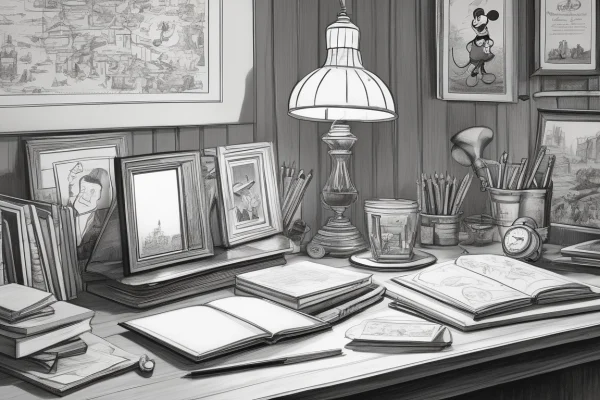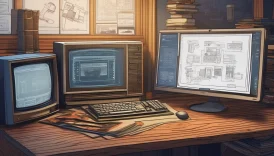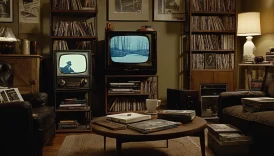The Origins of Disney: Who Inspired Walt Disney?

This article explores the key influences and inspirations behind Walt Disney’s creative vision, shedding light on the people and experiences that shaped the beloved entertainment empire we know today.
Walt Disney’s childhood experiences played a significant role in shaping his imagination and creativity. Growing up in Chicago, he was surrounded by a vibrant tapestry of sights and sounds that ignited his artistic spark. His early love for drawing was nurtured by his mother, who encouraged his passion. Imagine a young Walt, sketching the world around him, each line a step towards the magical universe he would eventually create. These formative years were filled with adventure, as he often explored the nearby countryside, drawing inspiration from nature. The freedom of his youth allowed his imagination to soar, laying the groundwork for the enchanting stories he would later bring to life.
Walt’s family background contributed immensely to his career. His father, Elias Disney, was a stern but hardworking man, while his mother, Flora Call Disney, was a nurturing presence who fostered Walt’s artistic inclinations. The dynamic between his parents created a home environment that balanced discipline with creativity. Additionally, Walt’s siblings played a pivotal role in his storytelling endeavors. They often engaged in imaginative play, which helped Walt hone his narrative skills. This familial bond was crucial; it was like a canvas where each member painted their unique colors, contributing to Walt’s artistic journey.
Disney drew inspiration from various art forms and literary works. Renowned artists and authors, such as Beatrix Potter and Charles Dickens, influenced his storytelling and animation styles. Their works enriched his creative palette, providing a backdrop against which he could develop his own unique style. Imagine the whimsical charm of Potter’s illustrations mingling with the rich narratives of Dickens—this fusion sparked Walt’s imagination and pushed him to explore new storytelling horizons.
Throughout his career, Walt Disney worked with several key figures who shaped his vision. Collaborators like Ub Iwerks and Les Clark were instrumental in bringing his ideas to life. Their shared passion for innovation created a synergy that propelled Disney’s projects forward. Each collaboration was like a dance, with each partner contributing their unique steps to create a masterpiece.
Walt Disney was inspired by the pioneers of animation. Innovators like Winsor McCay and Max Fleischer influenced his work and the evolution of animation techniques that defined his legacy. Their groundbreaking techniques laid the foundation for what would become the Disney magic we know today. It’s fascinating to think about how Walt stood on the shoulders of these giants, using their innovations to elevate his own creations to new heights.
The impact of Walt Disney extends far beyond his lifetime. His inspirations continue to influence modern storytelling and animation, ensuring his legacy endures in popular culture. Today, Disney’s creations are not just films; they are experiences that resonate with audiences of all ages. Just like a timeless fairy tale, Walt’s vision remains a guiding light in the world of entertainment.

The Early Years of Walt Disney
Walt Disney’s journey into the world of imagination began in a small town in Illinois, where he was born on December 5, 1901. Growing up in a family that valued creativity and storytelling, Walt was surrounded by an environment that constantly inspired him. His parents, Elias and Flora Disney, encouraged his artistic pursuits from a young age, allowing him to explore his passion for drawing and painting. This nurturing atmosphere was like a fertile garden, where Walt’s creativity could bloom.
As a child, Walt was not just a dreamer; he was a keen observer of the world around him. His experiences in the vibrant countryside of Missouri, where he spent his early years, played a pivotal role in shaping his imagination. The enchanting landscapes, bustling farms, and charming small-town life were like a canvas that painted vivid images in his mind. These early impressions would later influence the magical worlds he created in his films.
Walt’s family also played a significant role in his artistic development. His brother, Roy, became his lifelong partner in business, while his sister, Ruth, shared his love for storytelling. This close-knit family dynamic fostered a sense of collaboration and support that would be essential throughout Walt’s career. He often reminisced about the evenings spent together, where stories were shared and laughter filled the air, igniting the spark of creativity that would later light up the world.
In school, Walt’s artistic talents began to shine. He was known for his doodles and drawings, often captivating his classmates with his imaginative sketches. However, it wasn’t just his artistic skills that set him apart; it was his ability to weave stories that captivated audiences. This talent for storytelling was like a thread that would weave through his entire career, connecting his childhood experiences to the magical narratives he would create in the future.
Ultimately, the early years of Walt Disney were a tapestry of experiences, family influences, and artistic exploration. These formative years laid the groundwork for what would become an extraordinary career, one that would forever change the landscape of entertainment and storytelling.

Family Influences on Walt Disney
Walt Disney’s family was a cornerstone in shaping the visionary he became. Growing up in a household that valued creativity and storytelling, Disney was surrounded by influences that sparked his imagination. His father, Elias Disney, was a strict but hardworking man who instilled a sense of discipline and perseverance in Walt. Although Elias was often busy with his work as a carpenter and a farmer, his dedication to providing for the family left a lasting impression on Walt, teaching him the importance of hard work and commitment.
On the other hand, Walt’s mother, Flora Call Disney, played a pivotal role in nurturing his artistic talents. She encouraged his love for drawing and storytelling, often reading to him and his siblings. This early exposure to stories ignited a passion for creativity that would later manifest in his animated films. It’s said that Flora had a knack for storytelling herself, which undoubtedly inspired Walt to create his own narratives. The warmth and encouragement from his mother created a safe space for Walt to dream big.
Walt also had a close relationship with his siblings, particularly his brother Roy. Together, they shared a love for art and adventure, often engaging in creative projects and imaginative play. Their bond was not just that of brothers but also of collaborators, as they would later join forces in the world of animation and entertainment. This familial support system fostered a sense of teamwork and collaboration that would become a hallmark of Disney’s career.
In summary, the Disney family was more than just a backdrop to Walt’s early life; they were instrumental in shaping his vision and ambitions. The blend of discipline from his father and encouragement from his mother, coupled with the camaraderie of his siblings, created an environment ripe for creativity. It’s fascinating to think how these early influences laid the groundwork for a legacy that would change the face of entertainment forever.

Inspirations from Art and Literature
Walt Disney’s creative genius was not born in a vacuum; it was shaped by a rich tapestry of artistic influences and literary inspirations. From a young age, Disney was captivated by the magical world of stories and illustrations. His love for animation and storytelling can be traced back to his childhood, where he immersed himself in books and art that sparked his imagination.
One of the most significant influences on Disney was the Golden Age of Illustration. Artists like Arthur Rackham and Howard Pyle created enchanting visuals that transported readers to fantastical realms. Their ability to blend reality with imagination resonated deeply with Disney, igniting his passion for visual storytelling. He often said that illustrations had the power to breathe life into stories, a sentiment that would later define his animation style.
In addition to visual arts, literature played a crucial role in shaping Disney’s narrative approach. Classic fairy tales, such as those by the Brothers Grimm and Hans Christian Andersen, provided a treasure trove of inspiration. Disney’s adaptation of these stories into animated films was revolutionary, as he transformed them into vibrant, engaging experiences for audiences of all ages. For example, Snow White and the Seven Dwarfs not only redefined animated storytelling but also showcased how literature could be reimagined through the lens of animation.
Moreover, Disney was influenced by contemporary writers and artists who pushed the boundaries of storytelling. The works of authors like Lewis Carroll and J.M. Barrie introduced whimsical elements and complex characters that resonated with Disney’s vision. Their narratives encouraged him to explore themes of adventure, friendship, and wonder, which became staples in his films.
In conclusion, the interplay between art and literature was a driving force behind Walt Disney’s creative journey. By drawing inspiration from these sources, he not only enriched his storytelling but also laid the groundwork for a legacy that continues to inspire future generations of artists and storytellers.

Key Collaborators and Friends
Walt Disney’s journey to creating a magical empire was not a solo endeavor; it was a vibrant tapestry woven from the contributions of numerous collaborators and friends. These individuals played pivotal roles in shaping his ideas and bringing them to life. Imagine a painter surrounded by a team of talented artists, each adding their unique brushstrokes to a masterpiece. That’s exactly what Disney experienced throughout his illustrious career.
One of the most significant figures in Disney’s life was Ub Iwerks, a brilliant animator and lifelong friend. Iwerks was not just a colleague; he was the creative spark behind many of Disney’s early animations. Their partnership was akin to a dynamic duo, with Iwerks’ technical skills perfectly complementing Disney’s visionary storytelling. Together, they co-created the iconic character Mickey Mouse, a symbol of joy that would transcend generations.
Another key collaborator was Les Clark, one of Disney’s original Nine Old Men. Clark’s animation skills were crucial in developing the fluid movements that defined Disney characters. His work on films like Snow White and the Seven Dwarfs and Pinocchio showcased his ability to breathe life into animated figures, making them relatable and memorable.
Disney also drew inspiration from his brother Roy Disney, who managed the business side of the company. Roy’s financial acumen and strategic thinking allowed Walt to focus on his creative vision without the burden of monetary concerns. Their relationship was a perfect balance of creativity and commerce, proving that behind every great visionary, there is often a practical partner.
In summary, the success of Walt Disney was not just a product of his imagination but a collaborative effort enriched by the talents of those around him. The synergy between Disney and his collaborators created a legacy that continues to inspire countless artists and storytellers today.

The Role of Animation Pioneers
Walt Disney was undeniably influenced by a myriad of animation pioneers who laid the groundwork for the art form we cherish today. These innovators not only shaped the techniques of animation but also inspired Disney’s vision of storytelling through moving images. Imagine a world where characters leap off the screen, bringing joy and wonder to audiences—this was the dream that Disney sought to realize, and it was made possible by the trailblazers before him.
One of the most significant figures in animation history is Winsor McCay, the creator of the iconic cartoon series “Gertie the Dinosaur.” McCay’s work was revolutionary, showcasing the potential of animation as a storytelling medium. His meticulous attention to detail and ability to infuse personality into his characters left a lasting impression on Disney. The magic of Gertie’s antics not only entertained but also demonstrated how animation could evoke emotional responses from viewers.
Another key influence was Max Fleischer, known for his innovative techniques, such as the use of rotoscoping, which involved tracing over live-action footage to create realistic animations. This method would later inspire Disney’s approach to creating lifelike movements in characters like Snow White and Bambi. The ability to blend reality with fantasy opened new doors for storytelling, allowing Disney to craft narratives that felt both relatable and enchanting.
Furthermore, the collaboration and rivalry between Disney and other animation studios, such as Warner Bros., pushed the boundaries of creativity. The Looney Tunes characters, with their slapstick humor and memorable catchphrases, showcased a different style of animation that contrasted with Disney’s more heartfelt storytelling. Yet, this competition spurred Disney to refine his craft and explore new dimensions of character development.
Ultimately, the contributions of these animation pioneers were not just about technique; they were about vision. They paved the way for Disney to dream bigger and bolder, resulting in a legacy that continues to inspire animators and storytellers around the globe. Without the foundations laid by these remarkable individuals, the enchanting world of Disney might never have come to life.

Walt Disney’s Lasting Legacy
Walt Disney’s influence on the world of entertainment is nothing short of extraordinary. His vision transformed the landscape of animation and storytelling, creating a cultural phenomenon that resonates even today. Can you imagine a world without Mickey Mouse or the enchanting tales of Disney princesses? It’s hard to picture, right? Disney didn’t just create characters; he built a universe where dreams come true, and his legacy is felt in countless ways.
One of the most significant aspects of Disney’s legacy is the way he revolutionized animation. By introducing synchronized sound and full-color films, he set a new standard for the industry. His pioneering work paved the way for future animators and filmmakers, inspiring generations to push the boundaries of creativity. Today, we see the fruits of his labor in various forms, from feature-length animated films to cutting-edge virtual reality experiences.
Moreover, Disney’s storytelling techniques have left a lasting mark on modern cinema. His ability to weave complex narratives with relatable characters has become a template for filmmakers worldwide. The emotional depth and moral lessons embedded in Disney films continue to captivate audiences of all ages. Just think about it: how many times have you found yourself humming a Disney tune or quoting a line from one of their classics?
Walt Disney’s impact also extends beyond entertainment. His vision for a theme park experience revolutionized family vacations. Disneyland, opened in 1955, was more than just a park; it was a place where families could escape reality and immerse themselves in a world of wonder. Today, Disney parks attract millions of visitors annually, serving as a testament to his enduring influence.
In conclusion, Walt Disney’s legacy is a rich tapestry woven from his innovative spirit, storytelling prowess, and commitment to creating magical experiences. His inspirations continue to shape modern storytelling and animation, ensuring that the magic of Disney lives on. As we look to the future, we can only wonder what new stories and characters will emerge from the legacy of this remarkable man.
Frequently Asked Questions
- What inspired Walt Disney to create his iconic characters?
Walt Disney was deeply influenced by his childhood experiences, family, and the art and literature he cherished. His love for storytelling and drawing, nurtured by his parents and siblings, sparked the creation of beloved characters like Mickey Mouse and Donald Duck.
- Who were some of the key collaborators in Walt Disney’s career?
Walt Disney worked with many talented individuals, including animator Ub Iwerks and composer Richard M. Sherman. Their unique skills and creativity helped bring Disney’s imaginative ideas to life, creating a magical world that continues to enchant audiences today.
- How did Walt Disney’s early life influence his work?
Walt’s formative years were filled with artistic exploration and a passion for storytelling. Growing up on a farm, he often drew inspiration from nature and his surroundings, which shaped his creative vision and led to the development of his innovative animation techniques.
- What role did literature play in Disney’s creative process?
Literature played a significant role in shaping Disney’s storytelling approach. He drew inspiration from classic fairy tales and novels, adapting them into animated features that captured the hearts of audiences, blending timeless narratives with stunning visuals.
- How has Walt Disney’s legacy influenced modern animation?
Walt Disney’s innovative techniques and storytelling methods set the standard for modern animation. His legacy continues to inspire new generations of animators and storytellers, ensuring that creativity and imagination remain at the forefront of the entertainment industry.





